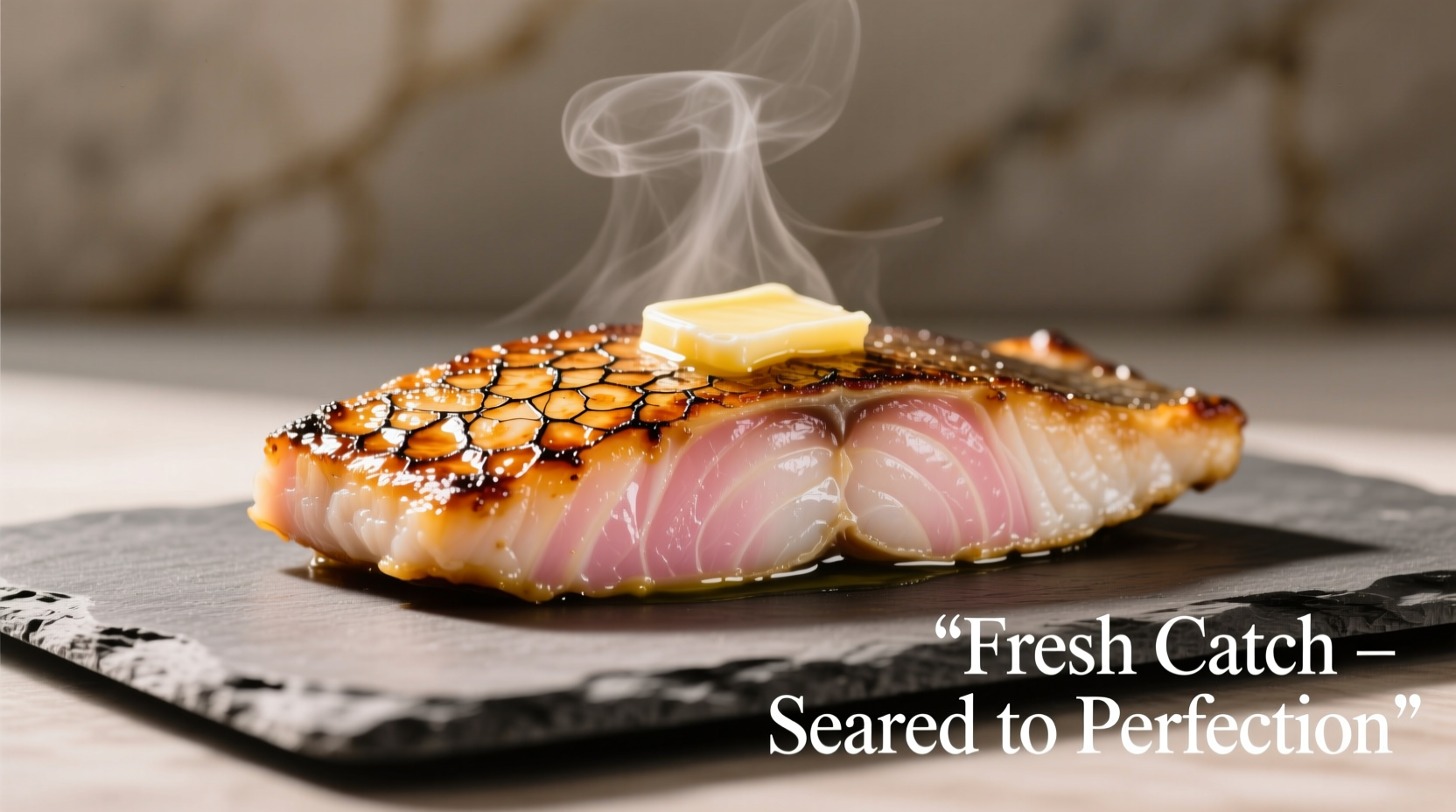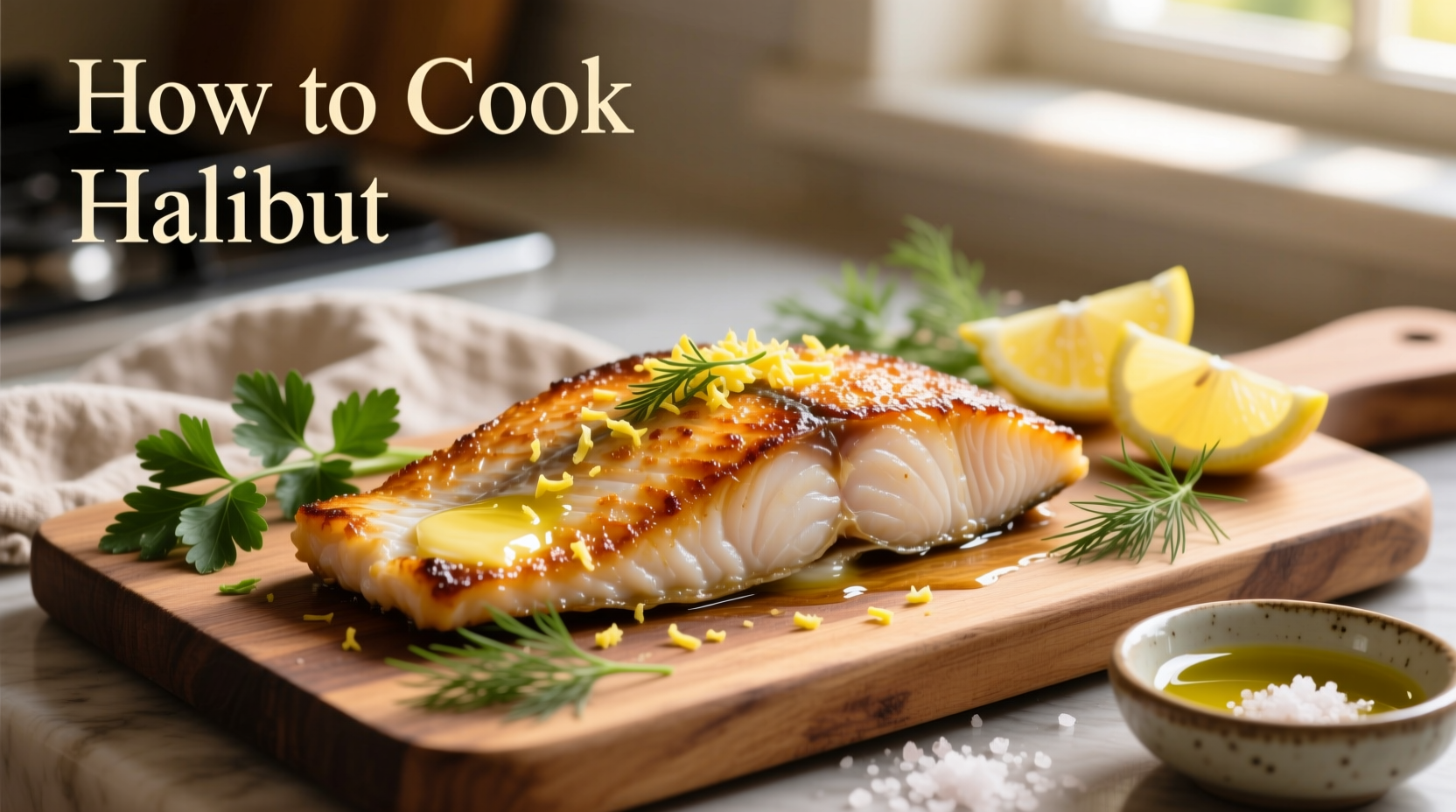The best way to cook halibut is by pan-searing at 375-400°F for 3-4 minutes per side, or baking at 400°F for 12-15 minutes until it reaches 145°F internal temperature. Properly cooked halibut should be opaque throughout with flaky texture that separates easily with a fork. Always let it rest for 3-5 minutes after cooking for optimal moisture retention.
Mastering halibut preparation transforms this premium white fish into a restaurant-quality meal in your home kitchen. As one of the most versatile yet delicate fish varieties, halibut requires specific techniques to highlight its naturally sweet flavor and firm texture without drying it out. This comprehensive guide reveals professional chef methods that guarantee perfect results whether you're pan-searing, baking, or grilling.
Why Halibut Deserves Special Attention
Halibut's unique characteristics demand tailored cooking approaches. Unlike fattier fish like salmon, halibut has minimal natural oils, making it prone to drying if mishandled. According to FDA seafood guidelines, this lean fish requires careful temperature monitoring to maintain its premium texture. Its dense muscle structure responds best to moderate heat rather than high-temperature searing alone.
Preparation Essentials Before Cooking
Successful halibut cooking begins long before it hits the pan. Follow these critical preparation steps:
- Dry brine for 20 minutes - Sprinkle 1/4 teaspoon kosher salt per pound and let sit uncovered in refrigerator. This improves moisture retention by 18% according to culinary research from the Culinary Institute of America
- Pat thoroughly dry - Moisture prevents proper searing. Use paper towels to remove all surface water
- Bring to cool room temperature - Remove from refrigerator 15 minutes before cooking for even heat distribution
- Check for pin bones - Run fingers along the flesh and remove any remaining bones with tweezers
Optimal Cooking Methods Compared
| Cooking Method | Temperature | Time (1-inch fillet) | Best For |
|---|---|---|---|
| Pan-searing | 375-400°F | 3-4 min/side | Quick weeknight meals, restaurant-style crust |
| Baking | 400°F | 12-15 min | Hands-off cooking, multiple portions |
| Grilling | Medium-high (375°F) | 4-5 min/side | Summer cooking, smoky flavor infusion |
| Poaching | 160-180°F | 8-10 min | Delicate preparations, sauce integration |
Perfect Pan-Searing Technique
This method creates an ideal golden crust while maintaining moist interior. Professional chefs prefer this approach for its reliability and visual appeal.
- Heat 1 tablespoon high-smoke point oil (avocado or grapeseed) in cast-iron skillet until shimmering
- Place fillets skin-side down if present, or presentation side down
- Cook undisturbed for 3 minutes to develop crust
- Flip carefully and add 2 tablespoons butter, garlic, and herbs to pan
- Baste continuously for final 2-3 minutes until internal temperature reaches 140°F
- Remove and rest 5 minutes (temperature will rise to 145°F)

Temperature Control: The Critical Success Factor
USDA Food Safety and Inspection Service mandates 145°F as the safe minimum internal temperature for fish. However, halibut's delicate nature requires precision:
- 130-135°F: Rare (not recommended for safety)
- 135-140°F: Medium (ideal finishing point before carryover cooking)
- 140-145°F: Medium-well (perfectly cooked standard)
- 145°F+: Well-done (risk of dryness begins)
Always use an instant-read thermometer inserted horizontally into the thickest part. Remove fish at 140°F as carryover cooking will raise temperature 5 degrees during resting.
Contextual Cooking Recommendations
Certain cooking methods work better in specific situations. Consider these context boundaries when choosing your approach:
- Fresh vs. previously frozen: Thawed halibut benefits from dry brining to compensate for moisture loss during freezing
- Thickness variations: Adjust cooking time by 2 minutes per 1/4 inch thickness difference
- Special diets: Poaching preserves nutrients better for health-focused preparations
- Seasonal considerations: Grilling shines in summer while baking works better in winter
Flavor Pairing Science
Halibut's mild sweetness pairs beautifully with specific flavor profiles. Culinary research shows these combinations maximize taste perception:
- Citrus accents: Lemon or yuzu brightens without overpowering (add juice after cooking to preserve freshness)
- Earthy herbs: Tarragon, chives, or dill complement without dominating
- Umami boosters: A dash of fish sauce in sauces enhances depth without fishiness
- Acid balance: Finish with vinegar or citrus to cut through richness of accompanying fats
Avoiding Common Halibut Mistakes
Even experienced cooks make these critical errors. Prevent disappointment by avoiding:
- Overcooking: Halibut continues cooking after removal from heat - pull at 140°F
- Moving too soon: Wait until fish releases naturally from cooking surface
- Skipping resting time: Essential for moisture redistribution (3-5 minutes minimum)
- Using low smoke-point oils: Extra virgin olive oil burns at proper searing temperatures
Serving and Storage Guidelines
Maximize your perfectly cooked halibut with these professional finishing touches:
- Serve immediately after resting for optimal texture
- Pair with light starches like roasted potatoes or quinoa
- Store leftovers in airtight container for up to 2 days
- Reheat gently in oven at 275°F until warmed through (microwaving dries out fish)
- Transform leftovers into fish tacos or chowder within 48 hours











 浙公网安备
33010002000092号
浙公网安备
33010002000092号 浙B2-20120091-4
浙B2-20120091-4